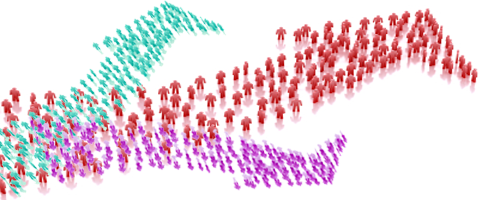Always an engineer at heart, I have always been inspired by the addition of useful visual imagery as part of decision support and analysis. In fact I started my career with Structural Dynamics Research Corporation (SDRC) as a co-op student using advanced dynamic visualization of vibrating structures as part of engineering designs. SDRC was a leader in what we now call CAD or computer assisted design. Today, in the era of BIG DATA, it is an imperative to integrate visualizations into decisions that cannot be accomplished with text readouts alone. News Patterns (aka Netro City Design) was founded on this vision of visualizations and decision support.
As our developments in visualizations grew, it became obvious that the CAD metaphor for news insights was insufficient. For example, CAD solutions do not necessarily take into account the real-time and dynamic nature of changing situations found in competitive news patterns. A metaphor more dynamic and interactive was required. And that metaphor was the Video Game.
As our developments in visualizations grew, it became obvious that the CAD metaphor for news insights was insufficient. For example, CAD solutions do not necessarily take into account the real-time and dynamic nature of changing situations found in competitive news patterns. A metaphor more dynamic and interactive was required. And that metaphor was the Video Game.
The logical foundation of detecting news based competitive patterns with a video game interface starts with these simple ideas:
- Faster- Our brains perceive patterns at 10,000,000 bits/second versus we read at only 200 bits/sec.
- Superior Insights- Movements can highlight important alerts and emerging trends.
- Intriguing- Videos, animations and interactions earn attention that static displays cannot. (Especially next generation members.)
- Winning- News Pattern network members read news to be better competitors. Video game interface reinforces the idea of competitive advantage.


